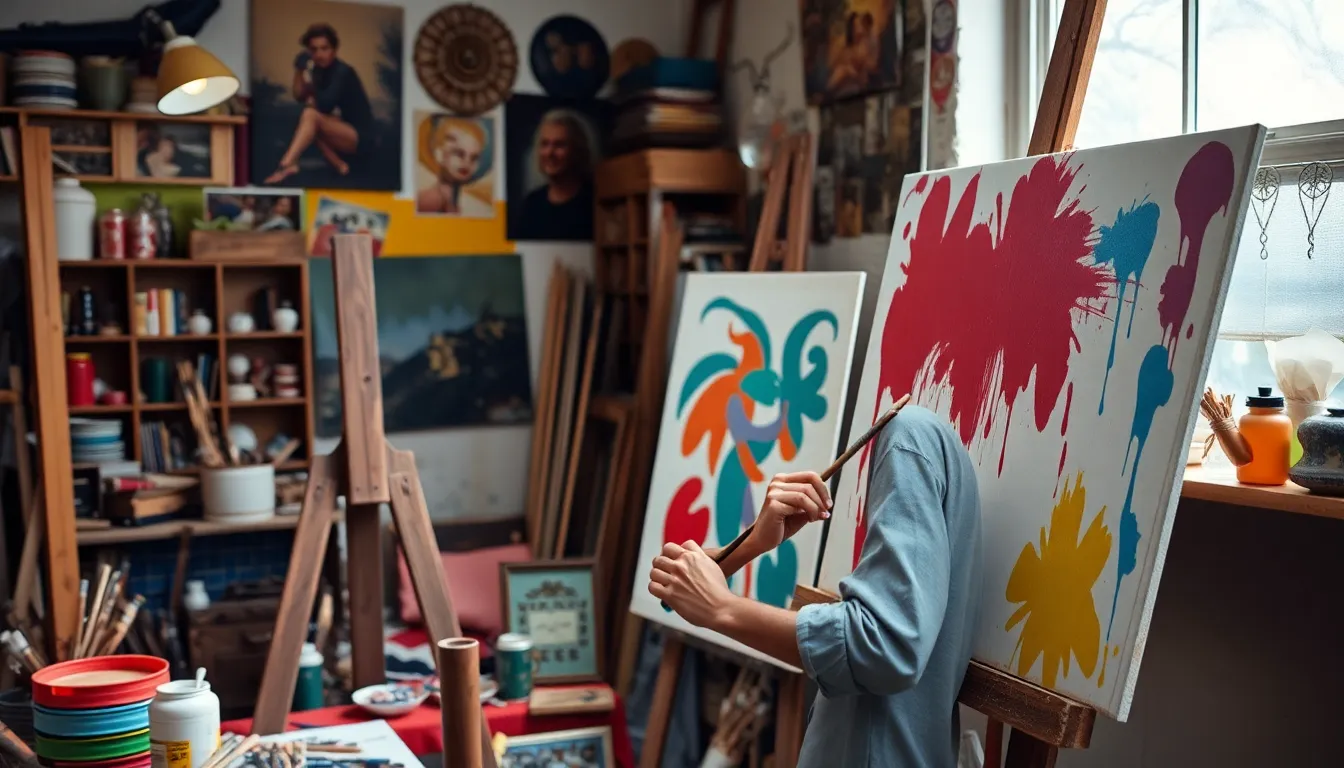In a world overflowing with trends and fads, cultural magazines stand out like a well-placed avocado toast on a brunch menu. They dive deep into the vibrant tapestry of art, music, fashion, and societal shifts, serving up fresh perspectives that keep readers engaged and informed. Whether it’s the latest indie film or a hidden gem of a gallery, these publications are the ultimate cultural compass, guiding enthusiasts through the ever-evolving landscape of creativity.
But let’s face it—who doesn’t love a good read that’s as enlightening as it is entertaining? With a dash of humor and a sprinkle of insight, cultural magazine coverage doesn’t just inform; it sparks conversations and inspires connections. So, buckle up as we explore how these publications shape our understanding of culture and why they deserve a top spot on your reading list.
Table of Contents
ToggleOverview of Cultural Magazine Coverage
Cultural magazines play an essential role in shaping perspectives on art, music, fashion, and societal changes. They delve deep into the realms of creativity and human expression. Readers often find themselves engaged with thought-provoking articles that reflect current trends and timeless themes.
Numerous cultural magazines exist, each offering unique insights and coverage. Publications like The New Yorker focus on in-depth journalism while Wired emphasizes the intersection of technology and culture. These diverse approaches attract a wide array of readers, connecting them with various cultural touchpoints.
Cultural magazines also serve as platforms for emerging voices in art and literature. Artists, musicians, and writers share their stories and experiences, fostering a rich dialogue within the community. Such interactions result in collaborative explorations that push boundaries and challenge norms.
The influence of cultural magazines extends beyond the printed page. Readers actively engage with content through online platforms and social media, amplifying discussions surrounding featured topics. This digital transformation allows for real-time feedback and interaction, further enriching the cultural narrative.
Advertising within cultural magazines often reflects the tastes and values of respective audiences. Curated ads align with editorial content, enhancing the overall reading experience. By showcasing brands that resonate with readers, these magazines create mutually beneficial partnerships.
Ultimately, cultural magazine coverage serves as a vital cultural compass. It guides readers through complex topics in art and society, helping them navigate ever-changing landscapes. The impact of these publications remains significant, continually inspiring connections and conversations among enthusiasts.
Importance of Cultural Magazine Coverage

Cultural magazines play a crucial role in shaping insights into various artistic fields and literary expressions. These publications delve into contemporary and classic art movements, showcasing artists and works that may otherwise go unnoticed.
Impact on Art and Literature
Cultural magazines highlight emerging talents across the artistic spectrum. By featuring profiles of artists and reviews of new literary works, these publications introduce readers to diverse voices and styles. They explore the nuances of art and literature, provoking thought and appreciation among enthusiasts. Also, they encourage artists to experiment, fostering a creative environment that inspires new ideas and collaborations. Effective coverage often results in increased visibility for unique projects and underrepresented artists.
Influence on Social Movements
Cultural magazines serve as platforms for social commentary and advocacy. Through thought-provoking articles and engaging interviews, they address pressing societal issues and trends. These publications raise awareness about various social movements, encouraging readers to reflect on their values and beliefs. Furthermore, they create spaces for dialogue, uniting people with common interests and goals. Cultural magazines can amplify marginalized voices, thereby contributing to socio-political change and community empowerment.
Types of Cultural Magazine Coverage
Cultural magazines offer diverse coverage that impacts audiences on various levels. This section explores key formats and genres within the landscape of cultural journalism.
Print vs. Digital Formats
Print formats deliver tangible experiences through visually captivating layouts and high-quality images. Readers often appreciate the tactile engagement that physical magazines provide. Digital formats, on the other hand, enhance accessibility with interactive features and multimedia elements. They enable immediate sharing across social media platforms, fostering broader discussions. Balancing both formats maximizes outreach, as each serves unique reader preferences and consumption habits.
Genre-Specific Publications
Genre-specific publications target distinct interests within culture, such as art, music, fashion, and literature. These magazines adopt tailored approaches to address niche topics and audiences. For instance, art magazines may analyze exhibition reviews and artist interviews, while fashion publications showcase trends and style guides. By focusing on individual genres, these magazines create dedicated spaces for in-depth exploration and allow readers to connect with specialized content relevant to their passions.
Case Studies in Cultural Magazine Coverage
Cultural magazines provide a crucial lens into contemporary art, literature, and social issues. Their unique coverage offers fresh insights and sparks meaningful conversations.
Notable Publications
The New Yorker features in-depth essays and cultural criticism that resonate with a broad audience. Wired focuses on the intersection of technology and culture, presenting articles that challenge conventional norms. Frieze caters to art enthusiasts by showcasing contemporary art movements and profiles of emerging artists. Vogue analyses fashion trends while addressing societal meanings behind them. Each publication serves as a distinct voice, contributing uniquely to cultural discourse.
Key Articles and Features
“Why Art Matters” in The New Yorker explores the societal impacts of artistic expression, highlighting its significance in modern culture. A Wired article, “Tech and the Arts,” examines how technology influences creativity and artistic collaboration. Frieze’s “The Rise of New Narratives” showcases innovative artists pushing the boundaries of traditional mediums. Vogue’s feature, “Fashion for Change,” discusses sustainability in fashion, melding style and social responsibility. These articles exemplify diverse perspectives and articulate pressing cultural themes.
Trends in Cultural Magazine Coverage
Cultural magazines continuously adapt to the changing landscape of audience interests and technology. This adaptability highlights evolving audience preferences and the significant role of social media.
Evolving Audience Preferences
Readers increasingly seek diversity in topics and voices. Younger demographics prefer engaging content that reflects their values and experiences. Publications have started to incorporate stories on social justice, sustainability, and inclusivity to attract these audiences. Magazines like Frieze and Vogue cater to niche interests, appealing to specific cultural subgroups while fostering broader conversations. The integration of multimedia elements also enhances engagement, making articles more visually appealing and easier to digest.
The Role of Social Media
Social media platforms significantly amplify cultural magazine content. Readers share articles and engage in discussions, expanding the reach of publications beyond traditional print audiences. Platforms like Instagram and Twitter allow magazines to showcase visual art and snippets of articles, attracting more followers. Quick interactions foster community, encouraging real-time conversations about featured topics. Additionally, social media serves as a vital tool for magazines to connect with emerging voices and provide feedback on reader preferences, allowing for more relevant and responsive editorial decisions.
Cultural magazines are essential in navigating the complexities of today’s artistic and societal landscapes. They not only inform but also entertain and inspire, fostering dialogue among diverse audiences. By showcasing emerging voices and addressing pressing social issues, these publications contribute significantly to cultural discourse.
As they adapt to digital platforms and changing reader preferences, cultural magazines continue to shape perspectives and spark meaningful conversations. Their unique ability to blend artistic exploration with social commentary ensures they remain vital resources for enthusiasts seeking depth and diversity in cultural coverage.





